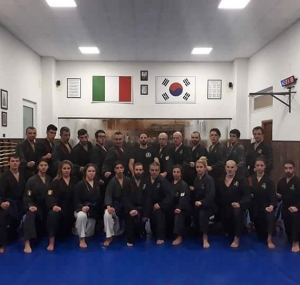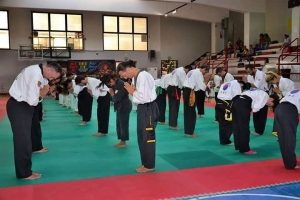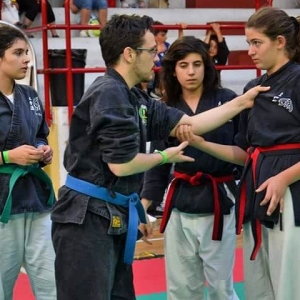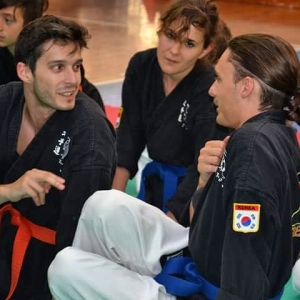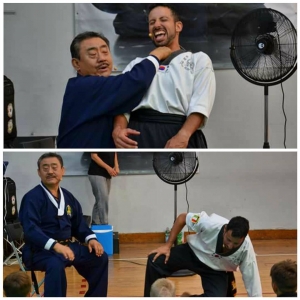Our StyleHRDWLA Staff2015-01-08T02:59:28-08:00
About the Art of Hwa Rang Do
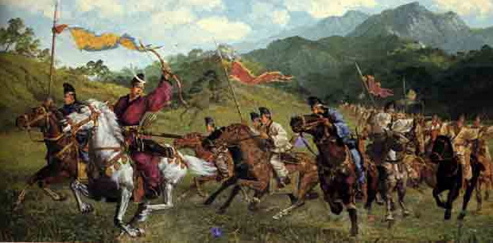
Thousands of years ago, there were no martial art systems, as we know it today. The martial art is an invention of the Twentieth Century. In ancient times, before the introduction of firearms to warfare tactics, martial skills were part of the country, nation or kingdom”s military combative training and was taught to the soldiers for the defense of their land. With the new technology of modern weaponry, these hand-to-hand martial skills were preserved through the creation of martial art systems, which we practice today as recreational sport or hobby.
However, Hwa Rang Do is unique in that it not only preserves the combative skills of the Hwarang Warriors, but their spirit. It was through the efforts of the brave Hwarang Warriors, that a society was able to stay intact for over a thousand years, making it the longest civilization in the history of the World. It is this knowledge, philosophy and way of life, which we are attempting to preserve through the creation of the modern martial art system of Hwa Rang Do and Tae Soo Do, which was founded by one man”s passion to empower benefit the people of today and tomorrow.
Hwa Rang Do
Graduate Martial Arts Program for experienced martial artists, wishing to attain mastery as well as live one”s life following the “Warrior”s Path.”
Hwa Rang Do is the most comprehensive system of self-defense and combative techniques in the World. This system has been developed in accordance to the ancient principles of Um-Yang, which emphasizes balance in life and harmony with others and nature.
 Hwa Rang Do Hard/Linear Movements
Hwa Rang Do Hard/Linear Movements
Soft/Circular Movements
Foot & Hand Techniques
Joint Manipulation/ Joint Locks
Takedowns, Throws & Sweeps
Ground Fighting / Grappling
Traditional & Modern Weaponry
Internal Energy Development
Meditation & Breathing Techniques
Healing Arts
Philosophy & Ethics
Development of Character & Leadership Skills
Light Contact Point Sparring
Full Contact Fighting and Conditioning
Weapon Fighting
Tae Soo Do
Undergraduate Martial Arts Program for beginners and/or people with no experience in the martial arts to gain better knowledge of self-defense and greater insight into what that “Warrior”s Path” is.
Tae Soo Do is the Undergraduate Program for beginner Martial Artists. It is designed to help understand the fundamentals, basic mechanics, and philosophies inherent in the practice of martial arts. It is also considered the sport version of Hwa Rang Do. The Curriculum:
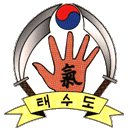 Hwa Rang Do Linear and Circular Kicking
Hwa Rang Do Linear and Circular Kicking
Linear and Circular Blocks and Hand Strikes
Combinations: Kickboxing
Practical self-defense Techniques
Basic Joint Manipulation
Basic Takedowns and Throws
Basic Ground Fighting and Choking
Weaponry: Ssang Jyel Bong, Jang Bong, Juk Do
Beginner to Advanced Forms: Weapon and Open Hand
Sparring: Light to Medium Contact
Basic Acrobatics and Falling Techniques
Stretching and Agility Drills
Um Yang
The Um-Yang is the Korean word for Yin-Yang of Chinese. It is a theory of Eastern metaphysics. It states that in nature, there exists an equal polar dichotomy, which co-exists to form everything within nature. The ancient scholars believed that,
“In the beginning there was only vital energy, Ki, consisting of Um and Yang. These opposing forces moved and circulated… As this movement gained speed, a mass of sediment was pushed together and, since there was no outlet for this, it consolidated to form the earth in the center of the universe.”
It is the interaction of these two forces, which created all things and all life. The symbol of Um-Yang is a circle with a squiggly line through the middle, which overlaps both halves, equally. It is said that the symbol of Um-Yang is a representation of two dragons swallowing each other in a constant rotation, never ending without any beginning. It is important to understand that the symbol is not just a circle divided into two halves. However, they interact to form different degrees of Um and Yang, but as a whole the opposing forces are equal. In order for one to exist, there must also exist the opposite to one: Light and dark, heaven and earth, right and wrong, love and hate, good and evil, strong and weak, microcosm and macrocosm, stability and flexibility, finality and eternity, etc. All things co-exist and one must learn to create a harmonious balance to develop the ultimate good within the Universe.
Analogy of Building a House:
We believe, whether you are building your moral character or physical attributes, one must build it as though building a house. You first lay a foundation of rock or concrete, then build the body or frame with wood, which gives it flexibility. You would not build a house on the foundation of sand or lose gravel and if you did, the house would surely move and collapse. It is this concept, which we utilize in combining the Um and Yang to develop a harmonious balance within the “self,” humanity, and the Universe.
Three Elements of Um:
Yu – Yu is the concept of soft, unrelenting motion, like flowing water. Water is soft yet it can erode the strongest of metals. Water moves in perpetual motion, unrelenting and constantly seeking a path. It rounds angular edges and conserves energy by conserving momentum, maximizing on its kinetic energy.
Won – Won is the concept of circular patterns. It shows that all things in life follow a cyclical pattern, starting from one point and finishing at the same point, which it started. Force can be curved or redirected by minimal opposing force, conserving energy to maximize impact. It also relates to centrifugal force, the power generated by a spinning motion. Even a fishing line can cut through flesh and bone, if spun with enough speed.
Hap – Hap is the combining or gathering. In order to create something, one must know all of its fundamental parts. Then, one can vary the combinations in order to create functionally different objects. In the combinations of things, one must maintain the concepts of efficiency, maximizing energy with minimal force.
Three Elements of Yang:
Kang – Kang is the concept of hardness, like rock or steel. Without a strong foundation, there is no stability, form or longevity. It also has to do with determination of will, never giving in nor yielding, but always staying focused at the task as hand.
Kak – Kak is the concept of angles. All things possess specific shape and pattern to create specific results. Knowing angles enhances the understanding of form, movement and positioning to maximize balance and power. This also refers to angles of attack and body positioning in relation to the opponent and the environment, developing better orientation and directions of attack and defense. This is particularly important in executing effective joint manipulation techniques. With the slightest change of angles, any person”s joint can be dislocated with minimal force.
Kan – Kan is the concept of distancing. One must understanding the proper range of the opponent”s and the individual”s arms, legs and/or weapon in order to effectively create a defensive perimeter as well as executing proper attacks, striking the target. Proper footwork and body positioning must be practiced in order to maximize mobility for attack and escape.
 Hwa Rang Do Hard/Linear Movements
Hwa Rang Do Hard/Linear Movements Hwa Rang Do Linear and Circular Kicking
Hwa Rang Do Linear and Circular Kicking



